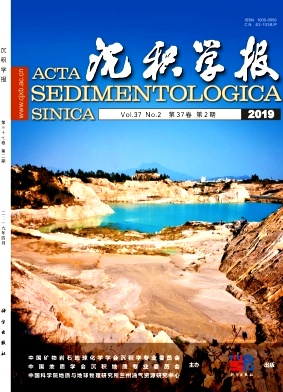Compositions of Lipid Compounds in the Oil and Gas Releasing Sediments in the Northern South China Sea
doi: 10.14027/j.issn.1000-0550.2018.137
- Received Date: 2017-12-25
- Rev Recd Date: 2018-05-15
- Publish Date: 2019-04-10
-
Key words:
- lipid compounds /
- organic carbon /
- sediments /
- diagenesis /
- North South China Sea
Abstract: Distribution and composition of organic carbon is the key to demonstrating the early diagenesis of organic carbon in the formation of oil and gas. Surface sediments were collected and analyzed to determine the content and form composition of lipid biomarkers in the estuary of the Pearl River Basin and adjacent areas in the South China Sea. The sources and occurrence of lipid compounds are also discussed. Results show that the organic carbon content range was 0.22%-0.66% in the sediment samples. The δ13C was -20.88‰ to -22.93‰, which implies a marine source of organic carbon. In total, 21 fatty acids, 6 fatty alcohols, 8 sterols and phytol were detected in the sediments. The content of total fatty acids, fatty alcohols, sterols and phytol ranged from 12.57 to 40.27 μg/g, 5.35-8.98 μg/g, 0.15-3.75 μg/g and 0.01-3.99 μg/g dry weight, respectively. The higher contents were located at the stations closest to the Pearl River estuary and Taiwan Strait. Lipid compounds mainly existed as free (FR) and base hydrolytic (BH) forms, with very little in acidic hydrolytic (AH) form. Phytol and sterols dominated BH components, but AH phytol was not detected. Lipid compounds primarily originate from marine microalgae and bacteria, with a small contribution from higher plants. The specific fatty acids produced by marine microalgae and bacteria contributed 21.18%-33.78% and 11.02%-15.64% to total fatty acids, respectively. The content of branched chain fatty acids (possibly derived from sulfate-reducing bacteria) was higher, at 1.79-2.62 μg/g dry weight, and accounted for 5.14%-6.50% of total fatty acids in sediments closest to the Pearl River estuary. These consisted of archaea microbes, implying sulfate reduction.
| Citation: | QIU Hong, ZOU Li, ZHANG MinSheng, ZHU ChaoQi, JIA YongGang. Compositions of Lipid Compounds in the Oil and Gas Releasing Sediments in the Northern South China Sea[J]. Acta Sedimentologica Sinica, 2019, 37(2): 416-423. doi: 10.14027/j.issn.1000-0550.2018.137 |






 DownLoad:
DownLoad: